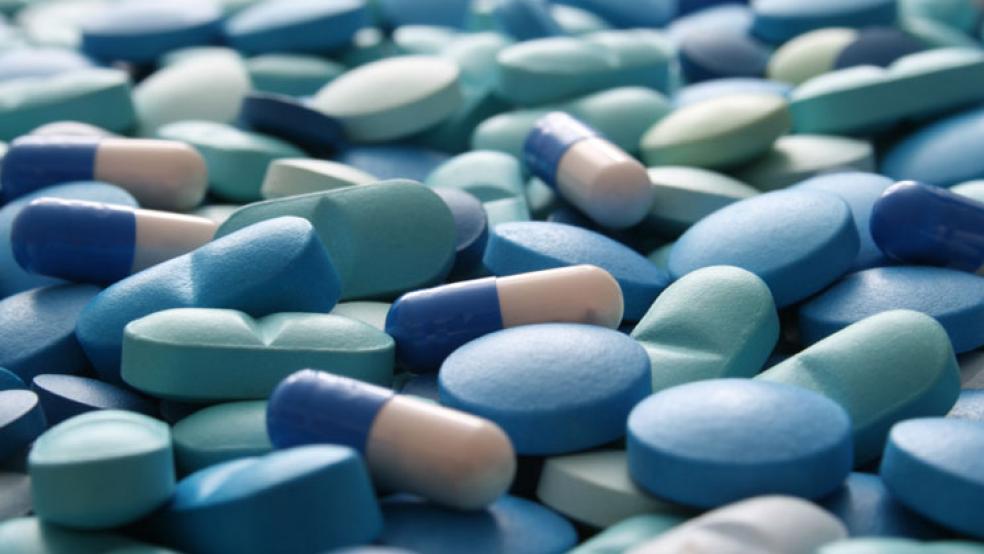First it was the Department of Veterans Affairs nervously complaining about the fast-mounting cost of providing a new specialty drug to treat patients with the deadly Hepatitis-C virus, and then some Medicaid officials across the country began rationing the pricey wonder drug to keep from busting their budgets in treating low-income Americans. About 3.2 million people in the U.S. have the disease, which can be dormant for years and is often spread through unsafe drug use, blood transfusions and other risky behaviors.
Now it’s the Medicare Part D prescription drug program for the nation’s seniors that’s feeling the budgetary pinch.
Related: The Life-Saving Drug That Almost No State Can Afford
A new analysis by ProPublica says Medicare spent an astounding $4.5 billion last year on Sovaldi and Harvoni, the two leading breakthrough drugs manufactured by Gilead Sciences. That was 15 times more than the $286 million the agency spent the previous year in treating the deadly liver disease.
Medicare Part D spent an additional $157 million last year on an older generation of Hep-C drugs in 2014, which brought its total expenditures for this vital but costly treatment to more than $4.7 trillion last year.
These new miracle drugs promising success rates of well over 90 percent can cost as much as $1,000 a day -- or $84,000 for a 12-week course of treatment. The surge in cost came as a shock to federal officials because the nine-year old Medicare prescription drug program had benefited in recent years from a slowdown in prescription drug costs for a number of market factors, according to ProPublica, an independent, non-profit investigative team. But the introduction of the new miracle drugs in the past year and a half has changed the equation.
Related: Get Ready for a Surge in Costly Specialty Drugs
Absent some dramatic change in policy, the spending crisis for Medicare and other federal programs will continue to mount. An estimated 350,000 Medicare beneficiaries currently suffer from hepatitis, according to the health-policy journal Health Affairs, yet many of them don’t realize that yet or have sought treatment for their problem. The Centers for Medicare and Medicaid Services provided last year’s spending figures to ProPublica in response to a Freedom of Information Act request.
As The Fiscal Times previously reported, the runaway cost problem first surfaced last year when the VA, the federal prison system and other public institutions complained about the fast-rising cost of popular specialty drugs like Sovaldi and Harvoni. Congressional hearings held at the time by Sen. Bernie Sanders (I-VT) revealed that many state Medicaid programs were also struggling with the same problem.
Overall spending on specialty drugs is expected to increase by 360 percent between 2012 and 2020. Meanwhile, Medicaid and Medicare will see spending on these new drugs far eclipse spending for non-specialty pharmaceuticals, according to an analysis by PricewaterhouseCoopers Health Research Institute.
Gilead, the makers of Sovaldi and Harvoni, has defended its marketing practices, saying the prices being charged are fair considering the effectiveness of the new drugs that prevents serious complications that would add to the government’s overall costs. Moreover, the manufacturer has negotiated discounts of as much as 40 percent to 50 percent with major government agencies and large private health insurers to blunt the full economic impact of the new drugs.
Related: The $1,000 Pill That Could Cripple the VA’s Budget
So far, Gilead’s Sovaldi has dominated the market – making it the fastest selling drug in history, measured by revenue. It reportedly took in $8.6 billion in the first nine months of 2014. However, a rival entry, Abbvie is quickly gaining momentum since federal regulators approved it in December. Abbvie’s chief executive officer Rick Gonzalez told Forbes in January that he expects to get access to 40 percent of insured people with Hepatitis-C this year.
According to ProPublica, Medicare's costs for the new drugs appear to be far higher than those incurred by state Medicaid programs, which collectively spent $1.2 billion on the drugs in the first nine months of the year. That’s because many Medicaid programs took a more restrictive approach toward the drugs than Medicare did, often requiring that low-income patients have advanced liver disease to be eligible to receive the pills.
Top Reads from The Fiscal Times:





